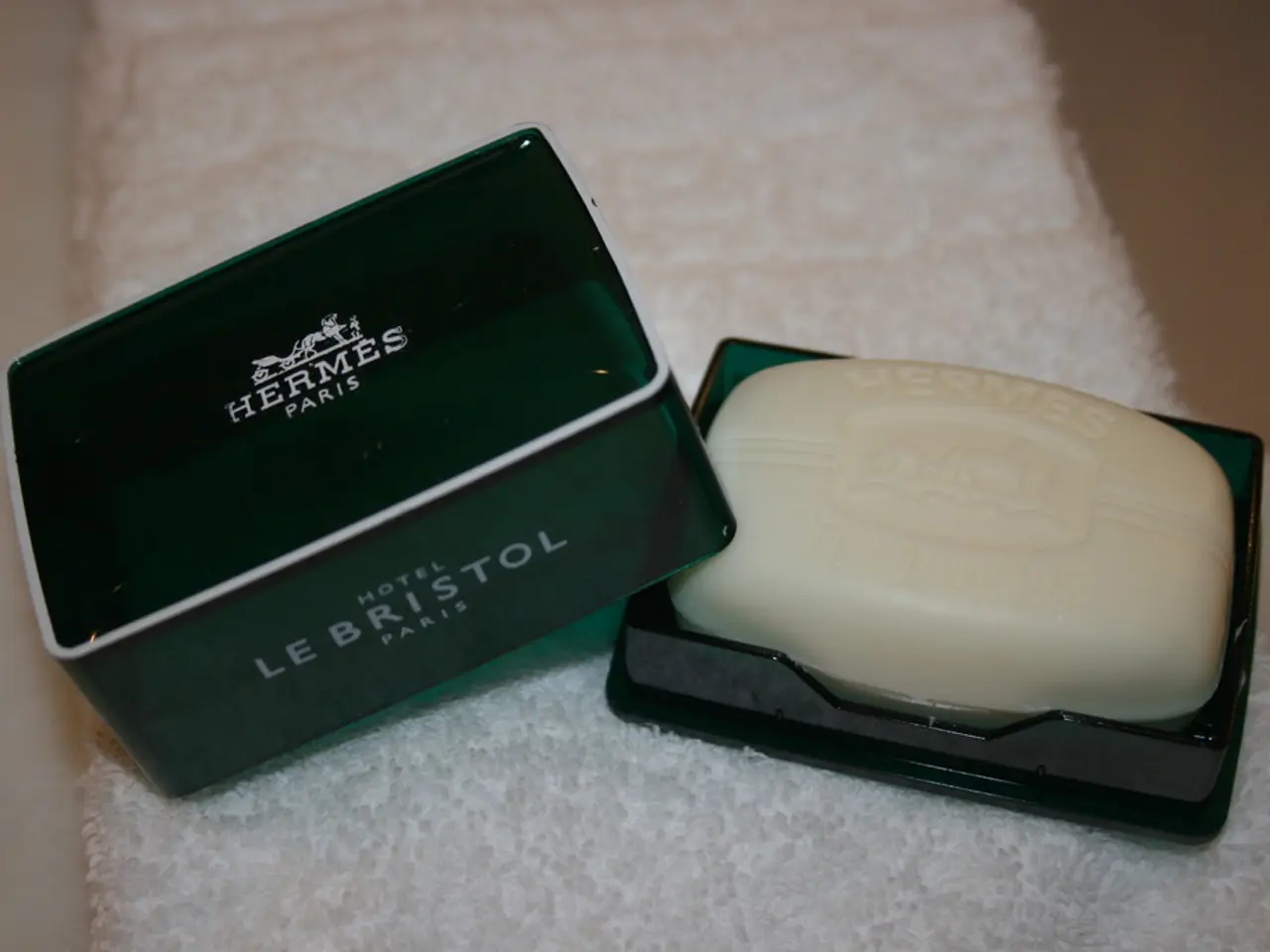Skilled Housekeeper Uncovers Methods for an Economical and Effective Laundry Routine
In the world of laundry, stains can often be a persistent and daunting challenge. But fear not, as we've gathered some invaluable advice from professionals with decades of experience to help you conquer those pesky marks.
First and foremost, pretreating stains is key. Regularly treating dirt-prone zones like collars, cuffs, and underarms can prevent buildup and make stains easier to remove later.
When it comes to tackling tricky stains, a specialized stain brush with soft horsehair bristles can be your best friend. After applying a stain remover like The Laundress Stain Solution, gently lift the stain without causing damage to delicate or embellished fabrics.
For persistent dye stains, a solution of half white vinegar and half water can work wonders. Soak the affected garment for 30 minutes, then rinse thoroughly with cold water. Alternatively, use a color-safe oxygen-based bleach for long soaks to release dye stains without aggressive scrubbing.
Soda crystals, strong alkalines, are effective for removing tough grease and grime stains. However, be cautious as they can potentially irritate skin and cause washing machine limescale buildup if used frequently.
Combining enzyme-based detergents or stain removers with gentle agitation and soaking can enhance stain removal without causing fabric damage.
Saturated fats, such as those from sauces, oil, or oil paints, can be tackled by applying undiluted dish soap directly to the stain and soaking in warm water.
For coffee, wine, tea, or juice stains, an ammonia and glycerin solution can be your secret weapon. Apply it to the soiled area and let it sit for an hour before washing the item by hand.
Tomato, ketchup, or beet stains can be treated by first scrubbing with household soap, then generously sprinkling with lemon juice, gently rubbing in, and leaving for 5 minutes before washing again.
Oxygen bleach's effectiveness is significantly increased by pre-treating the laundry with soap or detergent to remove surface dirt and sweat, followed by soaking in a hot bleach solution for an hour.
Remember, timely drying of laundry is crucial to prevent a musty smell and mold growth. And for those pesky pet urine smells, soak the items in a solution of water and 9% vinegar after the main wash cycle.
Lastly, for stubborn greasy stains on kitchen towels, consider boiling them in a solution of water, household soap, and water glass. Ironing natural fabrics like cotton and linen after washing not only smoothes the fibers and gives clothes a neat appearance, but also increases their resistance to stains and wear, thus prolonging their lifespan.
By following these expert recommendations, you'll be well on your way to a stain-free laundry life!
[1]: Source 1 [2]: Source 2 [3]: Source 3 [4]: Source 4 [5]: Source 5
Maintaining a fashion-and-beauty wardrobe often involves battling stains on clothing, especially when it comes to frequent wear items like collars, cuffs, and underarms. Aim to pretreat these areas regularly to ensure long-lasting garments.
A stylish and well-maintained home-and-garden can also benefit from the use of soda crystals for effective removal of tough stains from surfaces like kitchen countertops or ceramic tiles. However, be cautious when using them regularly to prevent skin irritation and washing machine limescale buildup.




